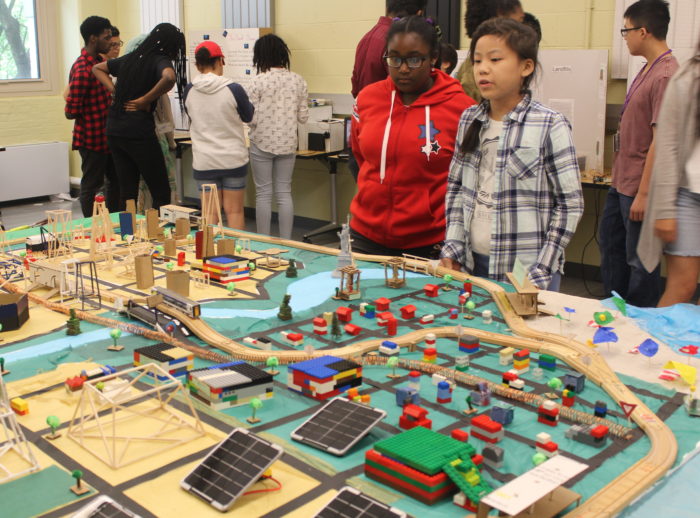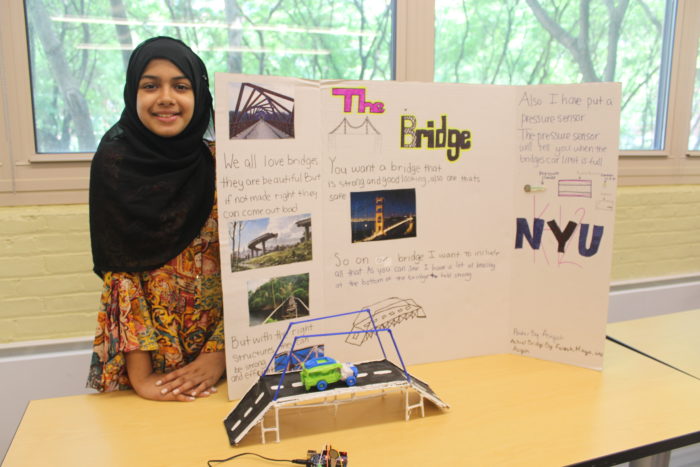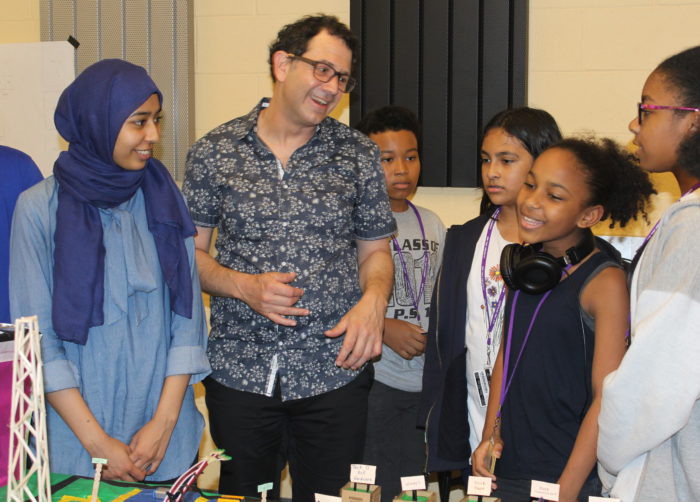At NYU Tandon, middle schoolers learn the science of smart cities

Megan Nie (in plaid), a SoSC participant, describes her group’s model of a smart city (Photos by Arden Phillips)
“We built this by thinking about problems in our community and how to solve them,” said Megan Nie, who’ll be entering sixth grade in the fall, as she showed off a detailed model of a modern city last week. The venue was no typical summer camp, but NYU Tandon School of Engineering, where Nie and her fellow middle schoolers were capping off a four-week program, the Science of Smart Cities (SoSC), in which they learned about energy, transportation, urban infrastructure, and wireless communications.
“Kind of the core elements of what makes up a smart city. They have a week on each. It’s all very hands on,” said Ben Esner, director of NYU’s Center for K-12 Stem Education, who founded the SoSC program seven years ago. Since then, more than 1,300 students across the city have completed the program. Students get a chance to work with authentic STEM materials, including micro-controllers, motors, sensors and electronic components.

Asiyah Malik, who’ll be entering seventh grade this fall, with her design for a smart bridge. Not related to our website, but a smart name, we’d say
At the public expo last week, students explained the layout of their cities and demonstrated how some of the specific pieces work. One of those pieces included a bridge with a built-in pressure sensor, which would alert managers when the bridge has too many vehicles on it.
The program is taught by undergraduate and graduate students at Tandon, which Esner says is vital to the program’s success, “What’s great is that those students have a lot of passion for these subjects. You’re not coming here to get a degree in engineering on a whim. You’re dedicated to it, you’re passionate about it. That’s one of the reasons the programs that we run here on campus are so effective. Young people see other young people who truly have a passion for these fields and these disciplines.”

Ben Esner, founder of the SoSC program, chats with students at their expo last week
After the public exhibit of their model cities, parents were invited to see their work as well. “These kids are going home and they’re talking about this every day,” said Esner. “And the parents and family members and guardians, the adults in the lives of these kids, are learning so much from them about what smart cities can be. It has a knock-on, civic-engagement affect which I find really exciting.”
Starting last year, summer students can take part in a longer, more advanced program called Innovation, Entrepreneurship and the Science of Smart Cities (ieSoSC). In the last two weeks of the seven-week program, they’ll participate in Sounds of New York City (SONYC), which gives students an opportunity to work in a real-life smart cities project. The SONYC program is intended to build systems to help combat the city’s noise-pollution problem.–By Arden Phillips










